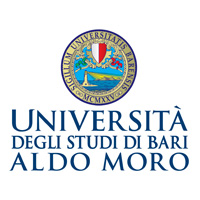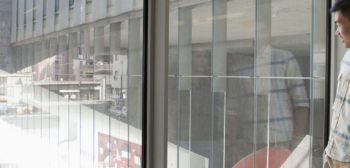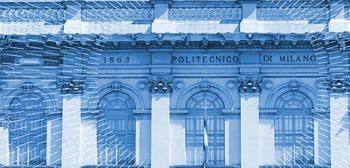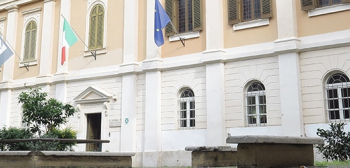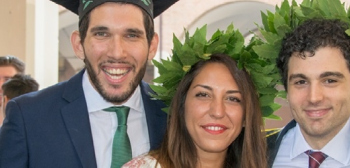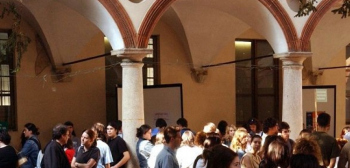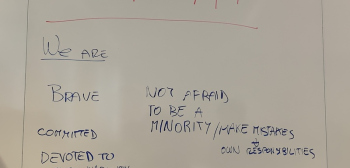巴里大学
About
Read more
Read less
The origin of the University of Bari dates back to 1581, when the "Collegio della Compagnia del Gesù" started the University degree in Philosophy and Human Sciences. At the beginning of the 18th Century the new "illuministic ideology" pushed forward the needs in the area of physical and natural sciences: as a consequence, curricula in Medicine, Law, Chimestry, and Botanics were activated in Altamura. In 1772 the Royal College moved the Universiy activitiy from Atamura to Bari, including the very outstanding curricula in Legislation and Agriculture. At the beginning of the 19th Century, New University Schools (Licei) were activated by G. Murat in the Apulia Region. Some of these Schools were closed in 1861/2, after the creation of the Italy Nation , other Schools were moved to Naples. At the same time, in order to continue the University activity, it was taken the decision to build the "Atheneum" in Bari. The construction started on March 14, 1868. The building was ready on December 28, 1889. The University of Bari was instituted in October 9, 1924, on the foundations of the ancient Graduate Schools of Pharmacy and Notaryship activated immediately after the Unification of Italy as substitutes of the former "Reale Liceo delle Puglie". In January 1925 the Faculty of Medicine was set up and included the pre-existing School for Midwives, and the School of Pharmacy was transformed into a Faculty. Successively, other faculties were instituted including the Faculty of Law, the Faculty of Economy and Commerce (stemming from the School of Advanced Studies of Commerce founded in 1882) and Agriculture. Since 1944, the University was extended with the institution of the Faculties of Humanities and Philosophy, Mathematics, Physics and Natural Sciences, Engeneering, Education Sciences, Veterinary Medicine and Foreign Languages. With the four-year Plan 1986/90, the setting up of other University centers in Foggia and Taranto were foreseen. In fact, branches of the Faculties of Law, Economy and Commerce and Agriculture were instituted in Foggia. In particular, a Graduate Course in Food Preparation Sciences was included in the Sillabi of the Foggia Faculty of Agriculture, successively called Science and Alimentary Technology. In addition, in Taranto a Graduate Course on Environmental Sciences with a focus on Marine Environment was instituted as a decentralized branch of the Faculty of Mathematics, Physics and Natural Sciences of Bari. Morever, with the same four-year Plan the Faculty of Architecture was intituted and then transfered jointly at the Faculty of Engeneering into Polite-cnico. Under the reform of the University regulations (n.341/90, and by the virtue of the University Development Program for the three-year period 1991/3, January 31, 1992, the authorization to istitute the following Diploma was granted, Plant Breeding - focus on "Cropping Techniques for Nursery-Grown Fruit and Vegetable (decentralized branch in Foggia); Animal Breeding - focus on "Aquaculture and Mariculture"; Animal Breeding - focus on Mariculture, Fishery and Seafood Processing" (decentralized branch in Taranto); Expert in the field of Cultural Properties; Journalism (decentralized branch in Foggia (not yet operational); Tour operator (not yet operational; Translators and...
About
The origin of the University of Bari dates back to 1581, when the "Collegio della Compagnia del Gesù" started the University degree in Philosophy and Human Sciences. At the beginning of the 18th Century the new "illuministic ideology" pushed forward the needs in the area of physical and natural sciences: as a consequence, curricula in Medicine, Law, Chimestry, and Botanics were activated in Altamura. In 1772 the Royal College moved the Universiy activitiy from Atamura to Bari, including the very outstanding curricula in Legislation and Agriculture. At the beginning of the 19th Century, New University Schools (Licei) were activated by G. Murat in the Apulia Region. Some of these Schools were closed in 1861/2, after the creation of the Italy Nation , other Schools were moved to Naples. At the same time, in order to continue the University activity, it was taken the decision to build the "Atheneum" in Bari. The construction started on March 14, 1868. The building was ready on December 28, 1889. The University of Bari was instituted in October 9, 1924, on the foundations of the ancient Graduate Schools of Pharmacy and Notaryship activated immediately after the Unification of Italy as substitutes of the former "Reale Liceo delle Puglie". In January 1925 the Faculty of Medicine was set up and included the pre-existing School for Midwives, and the School of Pharmacy was transformed into a Faculty. Successively, other faculties were instituted including the Faculty of Law, the Faculty of Economy and Commerce (stemming from the School of Advanced Studies of Commerce founded in 1882) and Agriculture. Since 1944, the University was extended with the institution of the Faculties of Humanities and Philosophy, Mathematics, Physics and Natural Sciences, Engeneering, Education Sciences, Veterinary Medicine and Foreign Languages. With the four-year Plan 1986/90, the setting up of other University centers in Foggia and Taranto were foreseen. In fact, branches of the Faculties of Law, Economy and Commerce and Agriculture were instituted in Foggia. In particular, a Graduate Course in Food Preparation Sciences was included in the Sillabi of the Foggia Faculty of Agriculture, successively called Science and Alimentary Technology. In addition, in Taranto a Graduate Course on Environmental Sciences with a focus on Marine Environment was instituted as a decentralized branch of the Faculty of Mathematics, Physics and Natural Sciences of Bari. Morever, with the same four-year Plan the Faculty of Architecture was intituted and then transfered jointly at the Faculty of Engeneering into Polite-cnico. Under the reform of the University regulations (n.341/90, and by the virtue of the University Development Program for the three-year period 1991/3, January 31, 1992, the authorization to istitute the following Diploma was granted, Plant Breeding - focus on "Cropping Techniques for Nursery-Grown Fruit and Vegetable (decentralized branch in Foggia); Animal Breeding - focus on "Aquaculture and Mariculture"; Animal Breeding - focus on Mariculture, Fishery and Seafood Processing" (decentralized branch in Taranto); Expert in the field of Cultural Properties; Journalism (decentralized branch in Foggia (not yet operational); Tour operator (not yet operational; Translators and...
University highlights
- 2012#601+
- 2014# 701+
- 2015# 701+
- 2016#701+
- 2017#701+
- 2018#801-1000
- 2019#801-1000
- 2020#801-1000
- 2021#801-1000
- 2022#801-1000
- 2023#801-1000
- 2024#741-750
- 2025#801-850
- 2026#801-850
QS Stars is a rating system that helps you select the right university based on your
interests. It provides a detailed look at an institution, identifying which universities rate highest in
the
specific topics that matter to you, like facilities, graduate employability, social responsibility,
inclusiveness, and more.
Campus locations
Piazza Umberto I,1, Bari, IT,
Piazza Umberto I,1 , Bari , Italy , 70121
Similar Universities
博科尼大学
Via Sarfatti 25, Milan
LUMSA University
Borgo Sant'Angelo 13, Rome
帕尔马大学
Strada Dell'Università, 12, Parma
维多利亚大学圣拉斐尔大学
Via Olgettina Milano, 58,, Milano
Related content
Test preparations
University of Bari
basic
19
no
777
L
CN

